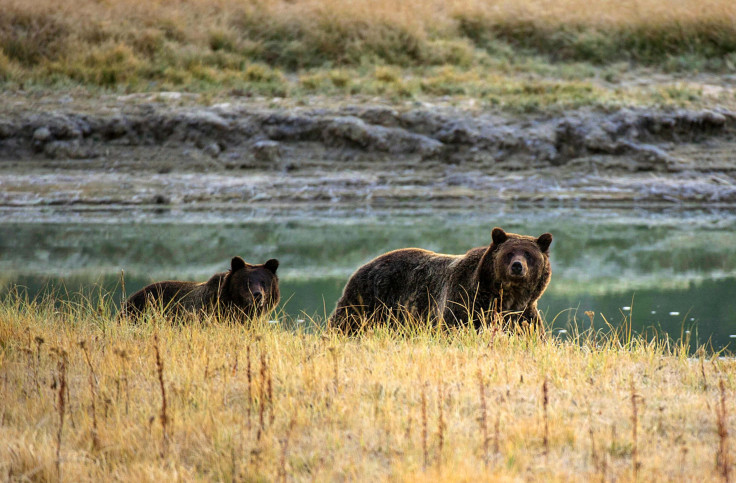Yellowstone Grizzly Bears To Be Removed From Endangered Species List, Lose Federal Protection

The Yellowstone population of the grizzly bear will be removed from the endangered species list after remaining on it for decades, the U.S. Department of Interior announced Thursday.
The DOI said the animal has been recovered to a point where government protections can be lifted. The Yellowstone population of the grizzly bear was as low as 136 bears in 1975, when they were added to the protection list. The number of bears has now increased to about 700 today, which meets the criteria for delisting, the Interior Department said. The agency said the stable population numbers for grizzly bears indicated the Yellowstone is at or near its capacity to support the animals.
Read: Your Sunscreen May Be Killing Coral Reefs, Here's A List Of Eco-Friendly Products
"This achievement stands as one of America’s great conservation successes; the culmination of decades of hard work and dedication on the part of the state, tribal, federal and private partners,” said Secretary of the Interior Ryan Zinke, in a statement.
The Yellowstone grizzly bears that will be delisted are located in parts of northwestern Wyoming, southwestern Montana and eastern Idaho. All other bear populations outside the Greater Yellowstone Ecosystem will continue to be protected. The final rule to remove the Yellowstone grizzly bears from the endangered list will be published in the coming days in the Federal Register and will take effect 30 days later.
Tom France from the National Wildlife Federation said the focus should now be turned to rebuilding the grizzly bear’s population in areas like the North Cascades in Washington state and Selway-Bitteroot in Idaho.
“With the help of the Endangered Species Act and sufficient dedicated funding for collaborative conservation efforts, we can restore populations of grizzly bears in other wild places in the West,” said France in a statement.
However, other advocates, including Natural Resources Defense Council, expressed their discontent with the department’s announcement, saying “it’s too soon to declare victory for these animals.”
“The Endangered Species Act protections kept Yellowstone’s grizzlies from extinction, but this iconic symbol of America’s Wild West is still at risk,” Sylvia Fallon, NRDC senior scientist, said in a statement. “Climate change, isolation, and increasingly fragmented habitat continue to threaten the long-term survival of Yellowstone’s grizzly bears. In fact, the only certainty about grizzlies at this point is that the bears face a future of uncertainty.”
Read: New Species Fossil: Extinct Australian Turkey As Big As Kangaroo
The NRDC pointed out that the U.S. Fish & Wildlife Service tried to remove the Yellowstone bears from the endangered list back in 2007. A federal court ordered otherwise, because of the loss of whitebark pine trees, which are a food source for the bears.
Native Americans, who consider the bear to be sacred, voiced their opposition over the delisting. Chief Stan Grier of the Piikani Nation of the Blackfoot Confederacy told IBTimes in a statement the tribes were “adamantly opposed to this decision.” Tribes in the U.S. and Canada signed a treaty opposing the bear’s delisting.
“The grizzly is integral to our cultures and religious lifeways, it is a sacred being that protects our sacred lands,” said Chief Stan Grier. “Within this struggle to protect the grizzly, and thus the land the grizzly, in turn, protects, we find many of our struggles: the struggle to defend our sovereignty, our treaty rights, to preserve and enforce consultation mandates, to defend and strengthen our spiritual and religious freedoms.”
While the Yellowstone grizzly bears are taken off the endangered list, there are plenty other animals that are still on. Here are some animals still at risk: Red wolves, leatherback turtles, Black-faced honeycreeper (the birds are presumed to be extinct or critically endangered) and Hawaiian Monk Seals.
© Copyright IBTimes 2024. All rights reserved.





















